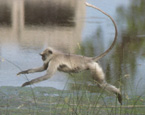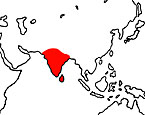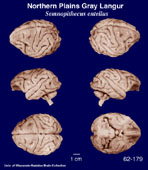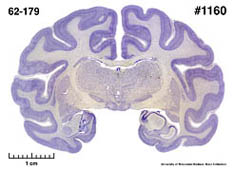|
The
single species S. entellus has a head and body length
of 410-780 mm and tail length of 690-1,080 mm. Weights range
between 5.4-23.6 kg. Coloration of S. entellus is gray,
brown or buff with yellowish, white, or orange-white underparts
and crown. There is a prominent brow ridge and the fur grows
downward over the brow, whorling at the front of the head and
then back over the crown. Newborn langurs are blackish brown.
S. entellus is adaptable to a variety of environments and
elevations. Habitats include desert edge, wet tropical forest,
and alpine scrub, from sea level to 4,000 meters. It is extremely
agile when traveling through trees, but adapts easily to areas
where trees are scarce, walking or running on the ground using
all four feet. Horizontal leaps of 3-5 meters are achieved easily
in the trees and up to 13 meters can be covered with some loss
of height. S. entellus is primarily vegetarian, as are
other langurs, and forages in the early morning and later afternoon.
Sleeping is done during midday. Leaves make up the major part
of the langur’s diet, but fruits, flowers, and cultivated
crops are also eaten when available.
Social groups have one of two structures: all male groups consisting
of 2-32 individuals which include adults, subadults and a few
juveniles, and heterosexual groups which may have only one adult
male and average 50125 individuals. There is an exception to
the latter structure. When populations are below carrying capacity
of the environment, there may be more than one adult male present.
Generally the ratio of adult females to adult males in these
groups is 2:1. Dominance hierarchy in all male groups is established
through fighting, and once resolved, intragroup coexistence
can be stabilized. New groups may be formed by younger males
reaching sexual maturity and establishing their own group with
adult females from this same group they are leaving. The dominant
male defends and leads the group. Vocalization seems to be limited
to an early morning booming whoop done in chorus and which is
thought to identify the location of a group. Though primarily
peaceful, males from outside a group have been known to challenge
the leader of a specific group and, if he wins, may kill all
of the infants in his new group. Consequently, the fertile females
are brought into estrus within 2 weeks and the new dominant
male can establish his own lineage.
Births can occur any time of year, but are mostly concentrated
during the dry season in India. In northern India this is April
- May, and December - March in southern India. There is a 24
day estrous cycle and gestation is from 190-210 days. If an
infant is lost, the female may go into estrous again in as soon
as 8 days. Usually there is one offspring, but there is an are
in the Himalayas where twins are frequently produced. Infants
are weaned at about 10-12 months, sexual maturity is reached
at 3-4 years for females and 6-7 years for males. Captive langurs
have been recorded to live beyond age 25.
S. entellus is found in Pakistan and India, lowlands north
of Godavari and Krishna Rivers, south of Ganges.
|



